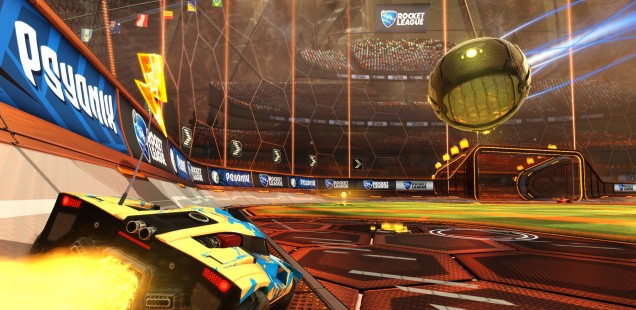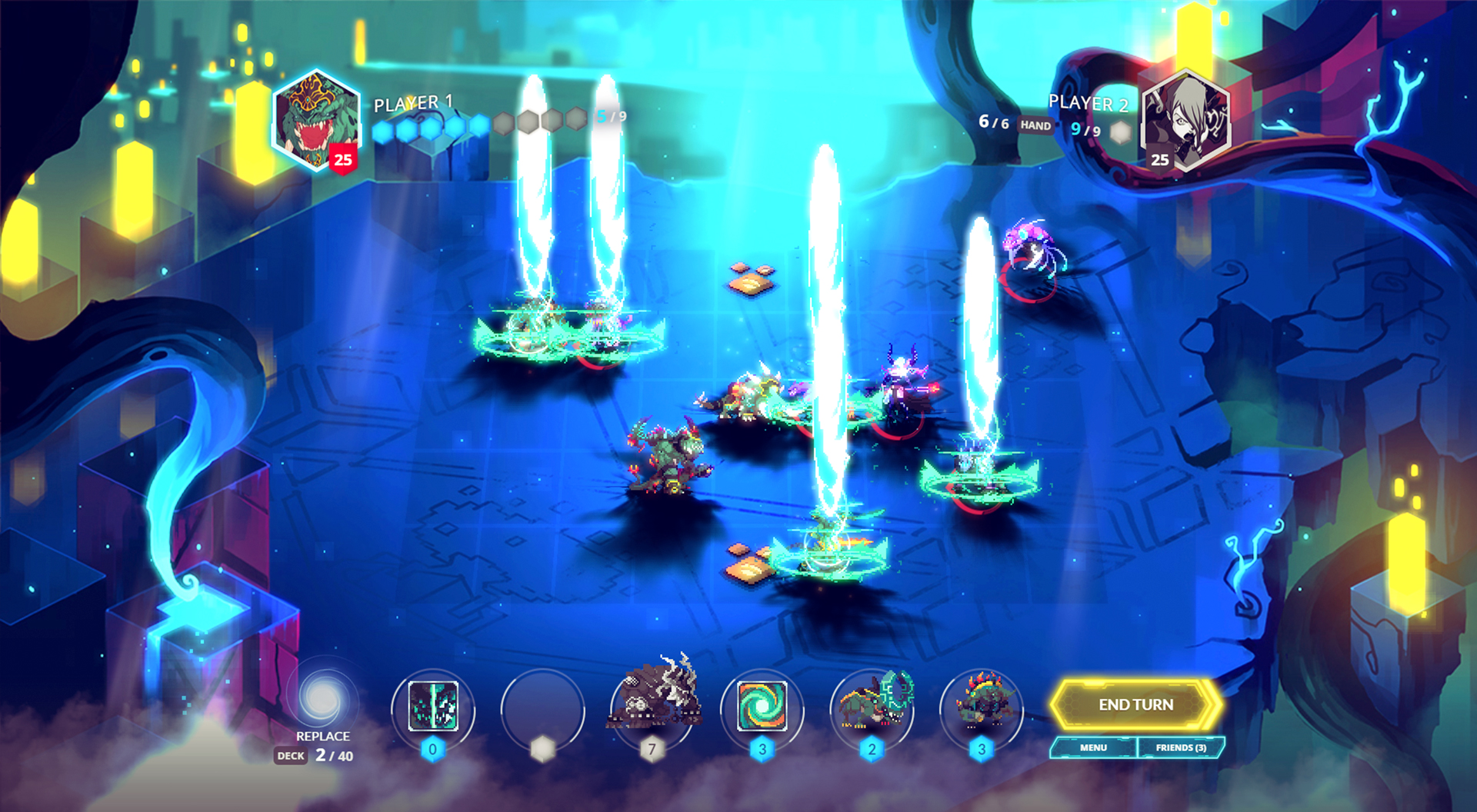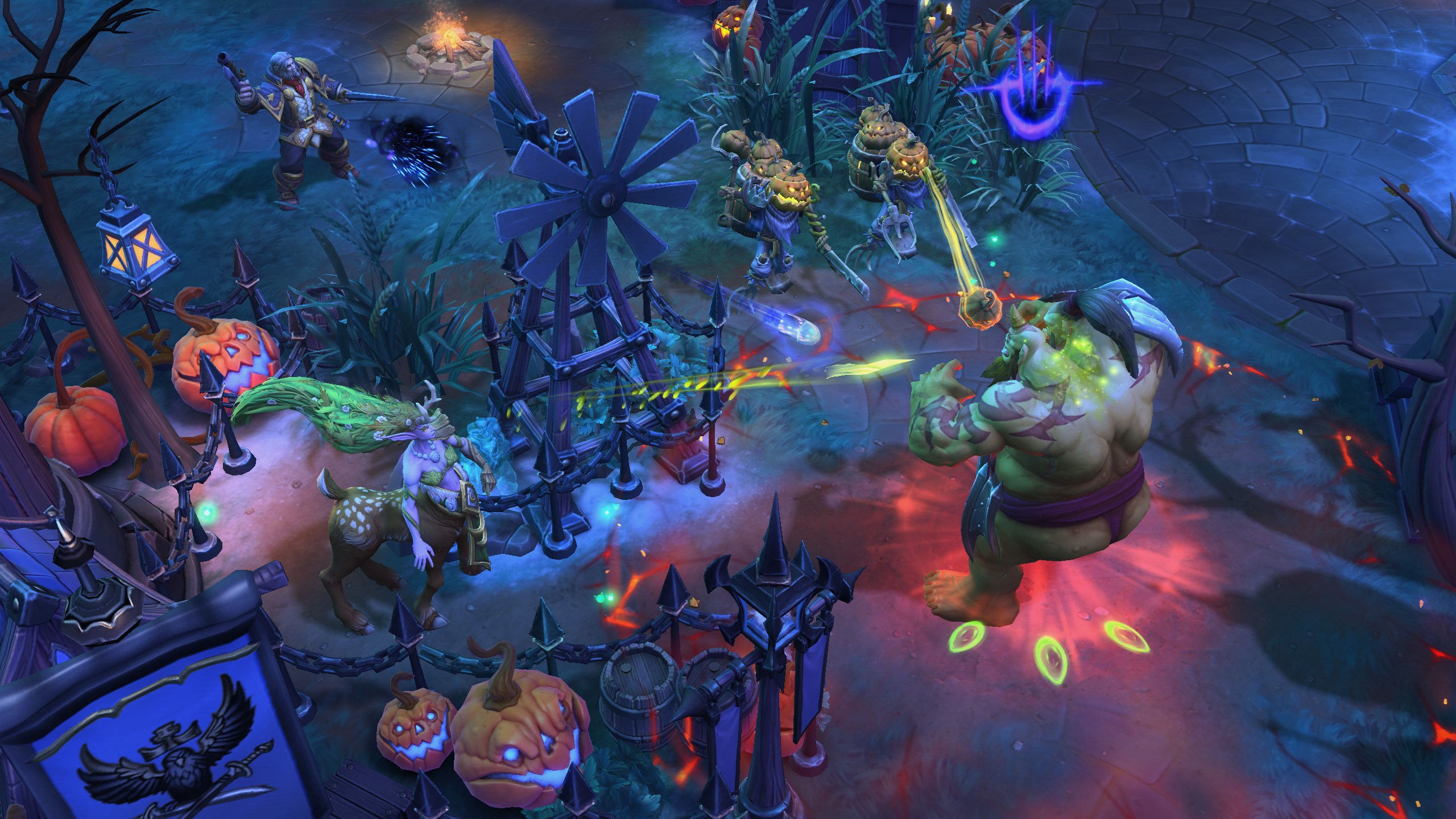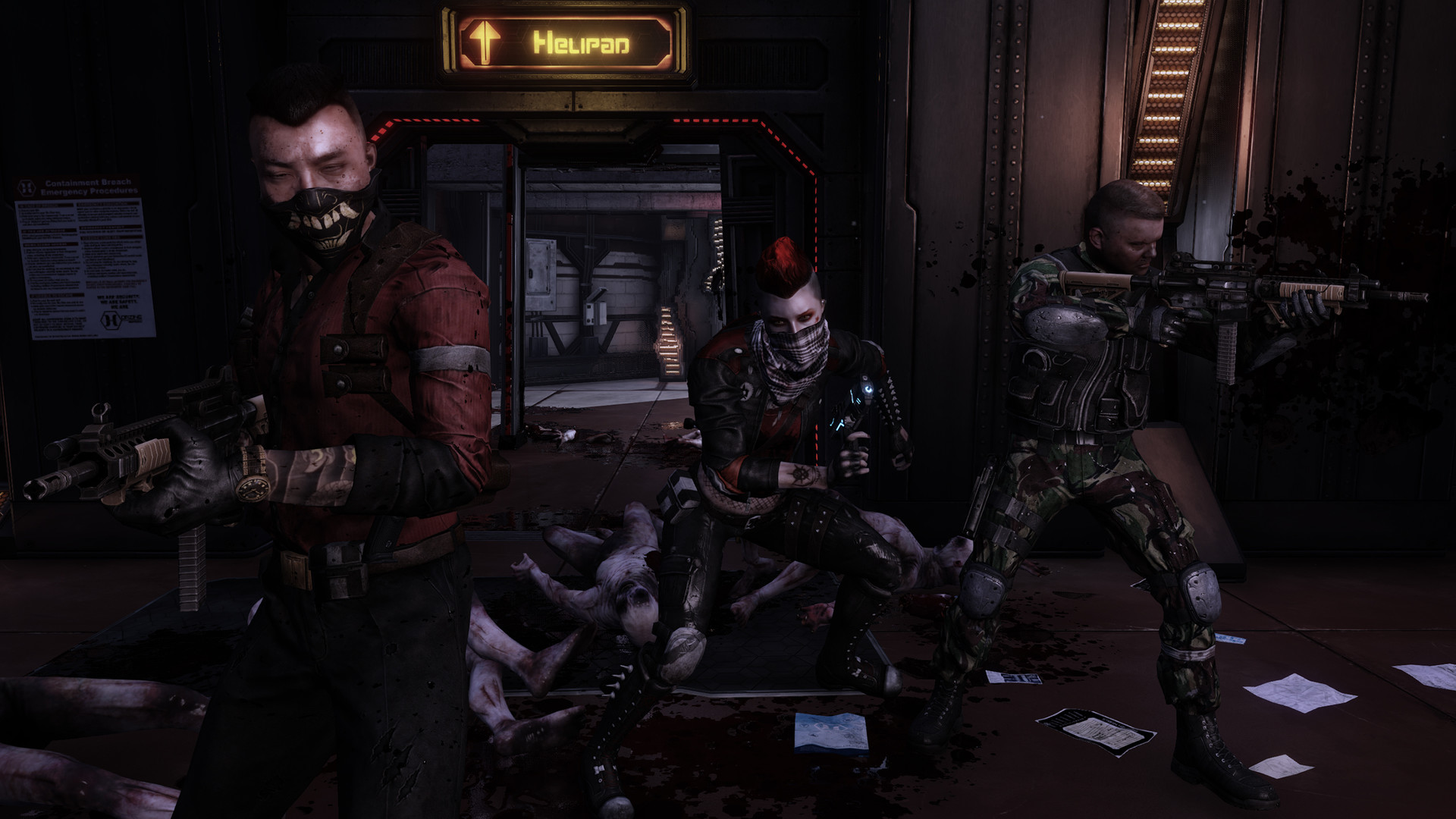
2015: The Year of Competition
Another five games meet in our arena today: Rocket League, Duelyst, Heroes of the Storm, Killing Floor 2, and Starcraft 2: Legacy of the Void.
Rocket League
The whole screen shakes with anticipation at the countdown. As the buzzer signals the seconds to kickoff, there’s a fleeting moment of stillness behind the quaking engine. As soon as the timer drops, cars take off like bullets, hurling themselves jubilantly into a pile around the ball, and chaos reigns.
Moments of panic and joy are just a few breaths from each other as the ball ricochets around the pitch. In the seconds of frantic desperation, there’s a muscular tension that streaks through the body, a moment of edge-of-seat panic, followed by loud groans or victorious cheers. These moments, organically, become perfect mirrors of the devoted fans sitting in the bleachers of a packed stadium, and bring with it the same rush that sports fans get every season.
It’s the weirdest kind of sport. No more refined than Go Pro cameras duct taped to RC cars chasing after a beach ball, the whole assemblage really shouldn’t work. And even if it would, it shouldn’t be an enduring form of entertainment. It’s just too silly, too goofy, too simple to really have the depth that a game needs to be wildly successful in a sea of hundreds of thousands titles.
Yet Rocket League is amazing because it manages to make a rowdy, loud, semi-drunken sports fan out of its players anyway, and does so deftly enough to hide the fact that it’s a bunch of rocket powered cars chaotically bapping a ball around, often more accidental than graceful. Against all odds, it’s still as compelling as the last five minutes of a tied Superbowl party, or match point of Wimbledon, or the final game of the world cup.
Taylor Hidalgo is a writer, editor, and Features Editor for Haywire. He’s a fan of the sound of language, the sounds of games, and the sound of deadlines looming nearby. He sometimes says things on Twitter and his website, and has a Patreon if that’s your thing.

Duelyst
It’s about the color. It’s the three dimensional board. It’s the ease with which the player can accumulate the imaginary currency that further secures the equally fictional cards that make play possible.
Maybe it’s one of these things, or maybe it’s all of them. Maybe Duelyst is just really good.
The collectible card game genre is an interesting place, in no small part thanks to the sudden appearance of the accessible elephant in the room. Hearthstone took a genre wrenched it away from its essential identity, presenting a way to play Magic: The Gathering without having to troop down to the gaming store or get your friend to call over. At the same time, it took control of this space. There are many who play CCGs other than Hearthstone, but other games struggle to match the appeal of Blizzard’s ingenious entry.
Duelyst does not merely survive in this environment, but successfully iterates on all of the things that Hearthstone does well, to become even more accessible, more welcoming than the Blizzard game, and with its own fair share of depth. That three dimensional board with its rosters of generals and minions calls to mind the strengths of tabletop games like Warmachine, summoning more of those gaming store memories. In addition to the opportunities to maneuver that the board provides, the game just looks good. Factions brim with character. Beneath it all lies the game’s secret ingredient: Duelyst feels like a competitive puzzle game, the training modules in essence presenting a single-player campaign. It’s not just the fighting or the cards. It’s the puzzling through.
John Harney is Assistant Professor of Asian History at Centre College, and Associate Editor of History Respawned. You can read more from him at his blog or contact him directly on Twitter.

Heroes of the Storm
I downloaded Heroes of the Storm as a joke. I was getting back into Starcraft 2 in July, and the Battle.net downloader kept pestering me about it, so I downloaded it just to see what the fuss was about. I never could get into its cousins League of Legends or DOTA, but what the heck: it was free, and I like Starcraft enough that the idea of playing Zeratul or Kerrigan in a competitive multiplayer game appealed to me. There’s a reason Super Smash Brothers is a success, after all. But I never expected to really get into game: at most, I figured I’d play a few rounds and then go back to Starcraft. Yet 484 games and somewhere around 150 hours later, well, here we are.
Let me try to explain it, by way of analogy: the most beautiful thing on Earth is a perfect 6-4-3 double play in baseball, when the batter hits directly to the shortstop, who catches it and then snaps it to the second baseman, who pivots and throws it, in turn, to the first baseman, bam, bam, bam, two men out, all in the span of about five seconds. Everybody has to be perfectly in sync for a double play to work, all on exactly the same page, perfectly executing their own little part of the choreography at exactly the right time. Heroes of the Storm scratches the same itch: surviving a teamfight requires all five teammates to be on exactly the same page, communicating at a certain subatomic level, since everything happens too fast for verbal discussion.
I could talk more, about how fun it is to watch the infancy of an eSport, or about the game’s emphasis on teamwork over individual showboating, or about how Blizzard needs to fire their entire art department and try again, but it really comes down to the double play thing, that ineffable click when you and four strangers all do the right things at the right time, in perfect, choreographed harmony.
Bill Coberly is a law student and occasional writer-of-things based in Minneapolis, MN, where he lives with his wife and two small and snuggly terriers, Azathoth and Nyarlathotep. He founded The Ontological Geek, a website dedicated to games-criticism and cultural commentary, and you can follow him on Twitter, if you are so inclined.

Killing Floor 2
The fact that it’s all grossly unnecessary doesn’t take anything from it. Killing Floor 2 is the goopy and bloody parts of a B-movie wrapped around the action gunplay of a big budget shooter, set to the aesthetic tastes of an 80s hard rock band, lined with flesh and metal, crammed full of fluids, and sent out into the world to be artfully dismembered.
As a shooter, Killing Floor 2 doesn’t really do a lot to push the mold forward. The player classes are largely unchanged from the first go around, the aesthetic is newer but ultimately cut from a higher thread count version of the same cloth, and the zeds themselves aren’t really that interesting as antagonists. Nothing about the game really does anything other than polishing an existing formula to a clean, detailed shine, and then splattering it with the pinwheeling arm of a zed in the heat of the moment.
Killing Floor 2 succeeds in the same way Call of Duty 4 did. It’s a very fluid, very polished version of a formula that’s been done before, and accomplishes its aesthetic in an excellent way. The shooting and classes all work, the weapons feel meaty and messy, as do the zeds, and taken as a whole, it’s a great time.
Just remember to take a shower afterward.
Taylor Hidalgo is a writer, editor, and Features Editor for Haywire. He’s a fan of the sound of language, the sounds of games, and the sound of deadlines looming nearby. He sometimes says things on Twitter and his website, and has a Patreon if that’s your thing.

Starcraft 2: Legacy of the Void
The problem with talking about Starcraft 2: Legacy of the Void is that it’s at least three separate things: a single-player campaign, an update to an eSport, and the culmination of an eighteen-year-long science fiction epic. As a single-player RTS campaign, it’s enjoyable enough, one of the last vestiges of a dying genre. As an eSport it’s fantastic, an excellent spin on the Starcraft 2 dynamic, full of intelligent choices and fascinating new units. As the culmination of an eighteen-year-long science fiction epic, it’s mostly terrible, the final shoddy piece of the increasingly incoherent mess that’s been Starcraft’s story since 2010.
What does that add up to? I have no idea. But let me talk to you about the Liberator, one of the new Terran units in Legacy of the Void. It’s a relatively cheap air unit that ordinarily can only attack other air units via a volley of missiles similar to an old Brood War unit from a million years ago. But press a button and wait a second or two, and the Liberator transforms into a stationary bombing platform, dealing preposterous amounts of damage to any infantry caught within its merciless range.
That sort of bi-modal, micro-focused unit is what distinguishes Legacy of the Void from its immediate predecessor, and I really dig it. Micro-management is always important in any version of Starcraft, but these wacky new units and various pulls away from larger economic play turn every skirmish into a tense dance. Am I disappointed in how the story ended? Absolutely. But as what is probably the final chapter in the game’s long and storied career as a competitive multiplayer game, Legacy of the Void feels like a good send-off.
Bill Coberly is a law student and occasional writer-of-things based in Minneapolis, MN, where he lives with his wife and two small and snuggly terriers, Azathoth and Nyarlathotep. He founded The Ontological Geek, a website dedicated to games-criticism and cultural commentary, and you can follow him on Twitter, if you are so inclined.